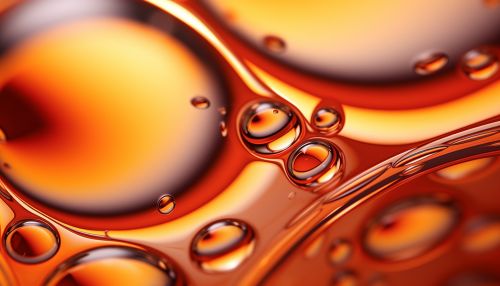Convection
Introduction
Convection is a process of heat transfer that involves the movement of molecules within fluids (i.e., liquids, gases) and rheids. It is one of the major modes of heat transfer and mass transfer. Convection can be "natural" or "forced". The circular motion that sets in motion in a fluid that is heated from below is known as convection current.


Understanding Convection
Convection occurs when heat is transferred through a gas or liquid by the hotter material moving into a cooler area. In meteorology, it is the vertical transport of heat and moisture, especially by updrafts and downdrafts in an unstable atmosphere. The terms "convection" and "advection" are used together to describe atmospheric processes.
This mode of energy transfer is most commonly observed in the kitchen when you see a pot of boiling water. The hot water at the bottom of the pot rises up to the top, causing the cooler water at the top to sink down to the bottom, thus setting up a circular motion of water. This is a classic example of convection and the convection currents that are set up in the fluid.
Types of Convection
There are two types of convection: natural convection and forced convection.
Natural Convection
Natural convection, or free convection, occurs when the fluid motion is caused by buoyancy forces that result from density variations due to variations of temperature in the fluid. In the absence of gravity, or in a weightless environment, natural convection does not occur, and only forced convection is possible. Examples of natural convection are the upward motion of air near a hot stove or the circulation of water in a pot that is heated from below.
Forced Convection
Forced convection is a mechanism, or type of transport in which fluid motion is generated by an external source (like a pump, fan, suction device, etc.). It should be noted that the presence of a bulk fluid motion, in general, helps in maintaining higher heat transfer rates. Hence, in many applications, natural convection is assisted by forced convection for achieving enhanced heat transfer rates.
Convection vs Conduction vs Radiation
Convection, conduction, and radiation are the three methods of heat transfer in a substance. It is important to understand the differences between the three.
Convection vs Conduction
While both convection and conduction are methods of heat transfer, they differ in the medium of transfer. Conduction occurs in solids, liquids, and gases and is the transfer of heat by direct contact. On the other hand, convection occurs only in liquids and gases and involves the movement of particles.
Convection vs Radiation
Radiation, like convection, can occur in gases and liquids, but it also occurs in a vacuum, something that convection cannot do. Radiation is the transfer of heat through electromagnetic waves and does not require a medium like convection does.
Applications of Convection
Convection is used in a wide variety of applications, including heating and cooling homes, cooking, power generation, and many types of industrial processes. Heat transfer through convection is extensively used in heating and cooling systems, such as heaters, air conditioners, heat exchangers, and boilers. In addition, convection is used in cooking, as it speeds up the cooking process compared to conduction.
Conclusion
Convection is a vital phenomenon in many natural and technological processes. The understanding of convection has helped us develop various technologies and systems that we use in our everyday life. From cooking our food to heating and cooling our homes, convection plays a crucial role in our lives.
